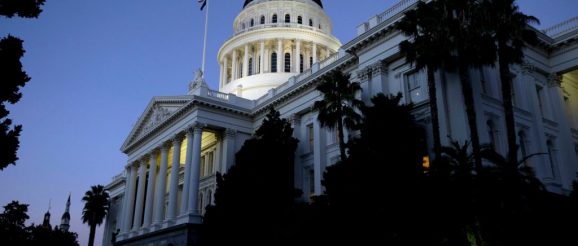California must foster, not drive away, the innovation economy – Orange County Register

Last year’s concern about a budget deficit and major tech companies leaving the state has been replaced by a debate over how to spend the $75 billion budget surplus.
Lost in this embarrassment of riches is the concern for the long-term health of the California economy and the industries that will be required to finance the state’s ongoing government commitments.
While the shockwaves of the initial departures of Hewlett Packard, Oracle, and others have receded, the issues that caused those companies to relocate still exist and must be addressed.
Unfortunately, concern for the well-being of the state’s business economy ebbs and flows. In 2013, the California State Assembly’s Committee on Jobs, Economic Development, and the Economy argued that, “As the state emerges from the global recession, there is a need to re-evaluate the state’s innovation strengths and shore up areas of weakness.”
That imperative still exists. But rather than shoring up the weaknesses and expanding the state’s leadership role, the state is more focused on spending money in their pocket and regulating the innovation economy. For example, in 2018 the state legislature passed the California Consumer Privacy Act (CCPA), which has an estimated compliance cost of $55 billion. In 2019, the Legislature passed Assembly Bill 5 to regulate the use of independent contractors which is raising costs for employers and eliminating jobs for people who need the flexibility that the independent contractor status provides. Then in 2019, voters approved the California Privacy Rights Act, which added more state mandates and created a new regulatory agency, the California Privacy Rights Protection Agency (CPPA).
Why should we be concerned about the future of the innovation economy if the state has an enormous budget surplus and everything is going great?
Jobs. The innovation economy is not just large corporations and startups located in the Silicon Valley, there are a growing number of technology companies in Orange County such as Mophie in Tustin or Whisker Cloud in Newport Beach that provide jobs and economic opportunity.
In their 2019 Workforce Indicators Report, the Orange County Business Council (OCBC) stated “there is growing evidence that businesses that efficiently and creatively use data are the most successful in the modern economy, giving rise to a significant surge in job creation for occupations such as Business Intelligence Analysts.” The report also found that “high-quality job opportunities will increasingly be concentrated in occupations that utilize both technology and non-routine cognitive skills.”
Revenue and social programs. The pandemic also revealed the resiliency of the innovation economy and the economic benefit the sector provides. According to the Legislative Analyst: “While many businesses have struggled throughout the pandemic, California’s technology sector has thrived. Several major firms posted historically high earnings. Expanding firms raised record amounts of funding via initial public offerings. Venture funds continued to flow to California startups. When technology firms do well, compensation to their employees rises. This, in turn, bolsters state income tax collections.”
It’s clear that continued growth of the innovation economy is critical to the funding of education, health care, local government, and a variety social welfare programs. If technology sector revenues decline, then funding for state’s priority programs will also suffer.
Brand. California has a brand to protect. Governor Newsom recognized the need for California policy to match the image when he stated: “It is that entrepreneurial and innovative spirit that has allowed California’s diversity to flourish and economy to grow and become one of the largest in the world.” The departure of brand name companies is not a threat to the California economy, but a warning sign that business frustrations continue to grow, then the small signs of discontent could become a much larger problem for the state.
What should the state be doing?
First, the state needs to make a serious effort to understand the factors that are causing some companies and jobs to leave California – lack of housing, high taxes, regulations and lawsuits, or a hostile rather than helpful state government. There are no illusions that the state will radically change policies, but meaningful adjustments can be made to support the innovation economy and create a more positive business climate.
Second, the legislature needs to restart the effort by the Assembly Committee on Jobs, Economic Development, and the Economy to understand the opportunities in the innovation economy and determine the actions necessary to support economic and job growth. The state needs an economic and innovation plan, not just a state budget, to take advantage of the abundance of additional state revenue and the federal recovery aid. An economic plan will force the state to focus on programs that will have a lasting impact on the state.
Related Articles
The pandemic has taught us that the innovation sector is vital to fulfilling the promises made to the next generation of California workers and entrepreneurs. Before the decisions about the spending spree are over, the state needs to restart the planning process. That is the immediate task of a good government.
John Kabateck is California State Director for the National Federation of Independent Business.
